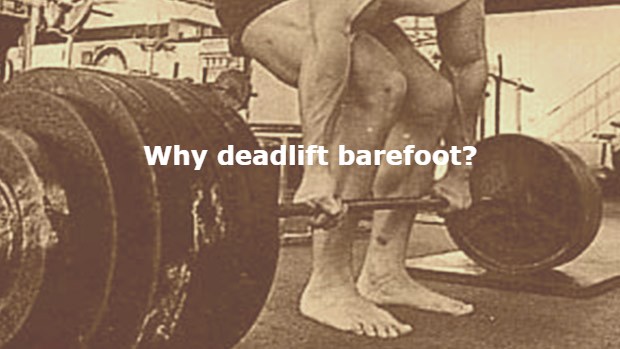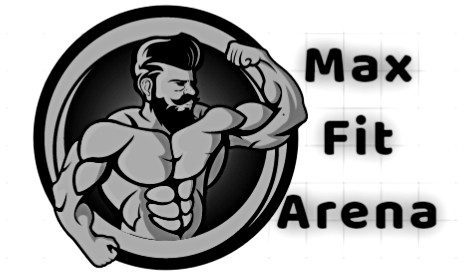Why deadlift barefoot? Sad Truth You Should Know

Introduction
Why deadlift barefoot? On the Lex Friedman podcast, Chris Duffin, founder of Bearfoot Athletic, is quoted as saying that shoes were made to protect you from the environment, from cuts, abrasions, and heat, but the foot, like every other part of the body, needs to be strengthened and controlled—and that’s where deadlifting barefoot comes in.
Deadlifts are one of the best muscle-building, core-engaging, and bone-strengthening exercises you can find; however, the beauty of this exercise, as confessed by many bodybuilders like Chris Huggins, is deadlifting barefoot, which is a game-changer for your performance and overall health.
In this article, we’re going to explore the benefits of deadlifting barefoot and why you might want to ditch your shoes for this powerful exercise. So, kick off your shoes, and let’s get started!
Why deadlift barefoot?
Lifting without shoes creates a more direct connection with the ground, which can help you generate more power and lift heavier weights with better form. Additionally, if you take a look at the anatomy of your foot, you’ll see that it is covered in muscles; these muscles need to be strengthened to support the amount of weight you carry.
Deadlifting barefoot helps strengthen the muscles in your feet and improve your overall body awareness, which can translate to better performance in other exercises.
Do bodybuilders train barefoot?
There are a healthy number of builders who lift barefoot and even advocate for it; the likes of Arnold Strongman swear by it, and with the number of benefits deadlifting barefoot has, there is good reason to understand their stance.
Barefooting gives you a more natural training experience; little wonder Arnold Shwaneggar is a fan of deadlifting barefoot. If you check Google, you’ll see a picture of him in his early days deadlifting barefoot.
This is not to say that all bodybuilders lift barefoot; in fact, some may prefer to wear shoes for additional support or to provide cushioning for their feet during high-impact exercises. Additionally, some gyms may have rules requiring shoes to be worn during workouts for safety and hygiene reasons.
Ultimately, whether or not a bodybuilder chooses to train barefoot is a personal preference and may depend on the specific exercises they are performing, their level of comfort, and the gym or training environment they are in.
What are the benefits of deadlifting barefoot?
The following are the benefits of deadlifting barefoot; maybe they’ll make you have second thoughts about it if you have been resisting it.
- Better stability: By lifting without shoes, you have a more direct connection with the ground, which can improve your balance and stability during the lift.
- Improved foot mechanics: Deadlifting barefoot can help strengthen the muscles in your feet and improve your foot mechanics, which can translate to better performance in other exercises.
- Reduced injury risk: Wearing shoes with a raised heel or thick sole can alter your body’s natural alignment and increase your risk of injury. Deadlifting barefoot can help you maintain a more natural posture and reduce the strain on your lower back and knees.
- Greater proprioception: Deadlifting barefoot can improve your overall body awareness and control during the lift, which can help you improve your technique and lift more weight with better form.
- Better Range of Motion: Lifting barefoot can also improve your range of motion. When you wear shoes, they can restrict your ankle movement and limit your ability to fully engage your posterior chain (the muscles on the back of your body). When you lift barefoot, you have more flexibility in your ankles, allowing you to engage your glutes and hamstrings more effectively.
- Increased Activation: Lifting barefoot can also increase muscle activation in the anterior weight and hip extensor muscle groups. When you lift barefoot, you have a more direct connection to the ground, which can increase the activation of your lower body muscles, helping you to lift heavier weights and develop more strength.
- Deadlifting barefoot can create greater ground force during the lift. When you wear shoes, there can be some compression in the sole of the shoe, which can reduce the amount of force you can generate from the ground. However, when you lift barefoot, you have a more direct connection to the ground, allowing you to generate greater force through your feet and into the lift.
Should you do a deadlift barefoot?
You should deadlight barefoot if you’re looking to reap the numerous benefits it gives, as stated earlier in the article; however, one thing you should keep in mind is that these things take time, and if you haven’t been doing them chances are that the muscles underfoot are not strong enough for extremely heavy lifting, so warm your way into it by first practicing barefoot walking, preferably within your house, then doing simple variations of work and gradually building it up from there. I can’t wait to see you rocking those feet!
Should you wear socks when deadlifting?
In some gyms, trainers are not allowed to train barefoot for fear of being exposed to bacteria or fungus, or worse, dropping weights on their feet. To avert this, you can wear socks, but you must ensure they are anti-slip so you don’t come crashing down like the wall of Jericho.
FAQ
Is it better to squat barefoot or not?
Squatting barefoot can give the trainer better stability, muscle activation, and range of motion, so if that is something you’re aiming for, go right ahead.
Do powerlifters squat barefoot?
Some powerlifters prefer to squat barefoot, while others prefer to wear shoes with a heel lift or other supportive features. It ultimately depends on the individual lifter’s preference and any equipment regulations in the competition they are participating in.
Why Is Barefoot Better?
Barefoot lifting can be better for several reasons, including improved stability, better range of motion, increased muscle activation, and better form. It also allows for a more direct connection to the ground, which can help generate greater ground force during lifts.
Is lifting barefoot safe?
Lifting barefoot can be safe, as long as the lifter is lifting on a clean and safe surface and doesn’t have any pre-existing medical conditions that could be exacerbated by lifting barefoot. It’s always recommended to consult with a qualified trainer or healthcare professional before making any changes to your workout routine; safety should always come first.
Is it harder to deadlift barefoot?
For a first-timer, deadlifting barefoot can initially feel harder due to the lack of support and cushioning from shoes. However, over time, lifting barefoot can improve foot strength and stability, allowing for greater power and efficiency during the lift. You got this!
